Benjamin Moore’s Classic Gray and Revere Pewter are the most popular neutral interior paint colors. But deciding between the two can be tough with one being a cooler gray and the other a warm, greige hue.
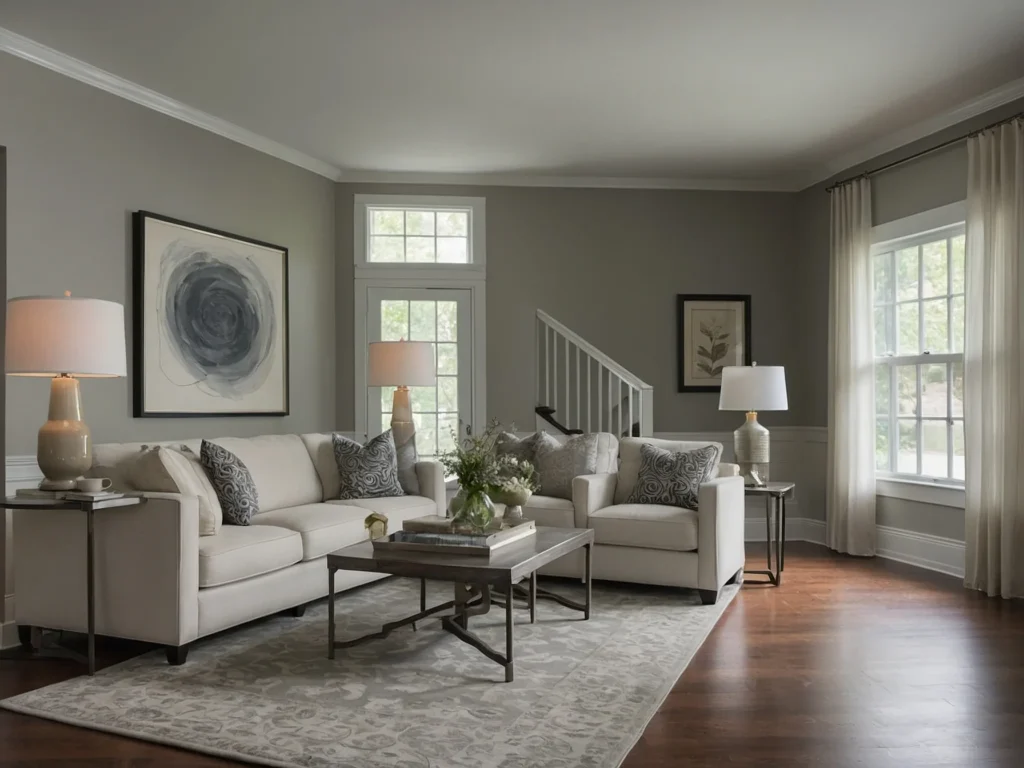
In this in-depth comparison, we’ll analyze the unique characteristics of Classic Gray and Revere Pewter, from undertones to aesthetic appeal. We’ll also discuss how these paint colors coordinate with various room styles, woods, metals and other accents.
You’ll clearly understand that Benjamin Moore gray suits your space and personal taste by the end.
Overview of Classic Gray and Revere Pewter
Classic Gray – The Cool and Airy Gray
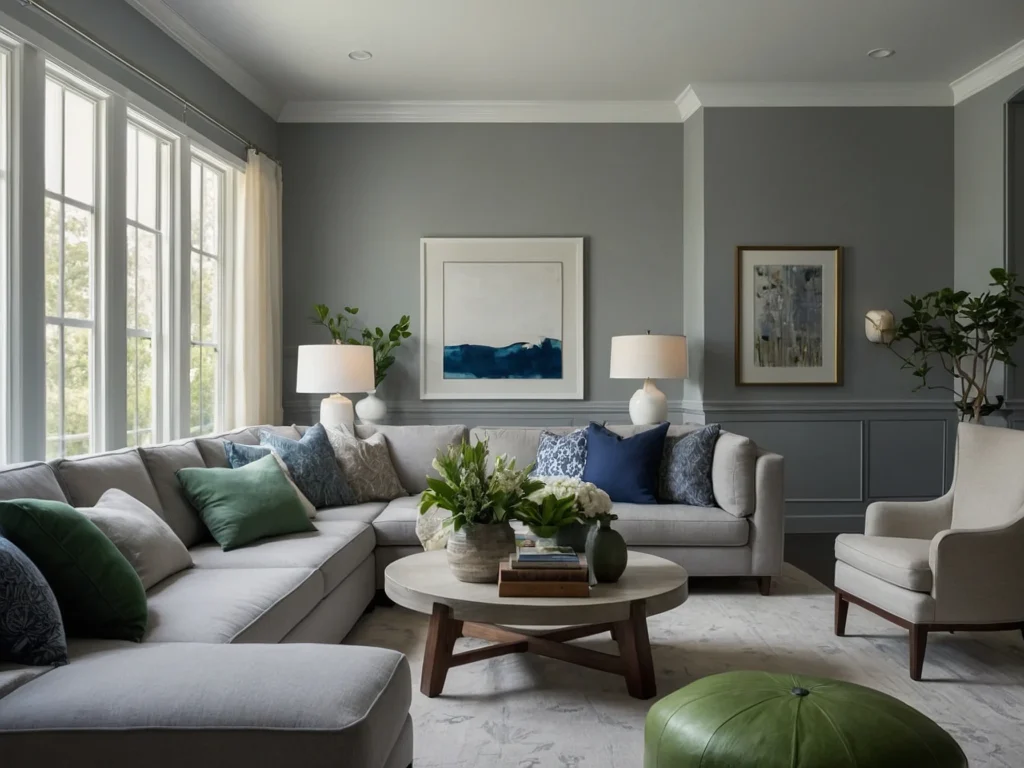
A light-medium classic gray, CC-10 has rapidly emerged as one of Benjamin Moore’s most popular neutral shades. With blue and green undertones, it creates an airy, relaxing vibe.
Classic Gray features just enough saturation to avoid feeling washed out. Yet it remains light enough to open up smaller spaces. Its versatility allows it to work in casual, transitional and modern designs.
Overall, the cool elegance of Classic Gray suits bedrooms, living rooms, offices and more. It provides a soothing, spa-like backdrop without starkness.
Revere Pewter – A Warm, Timeless Greige
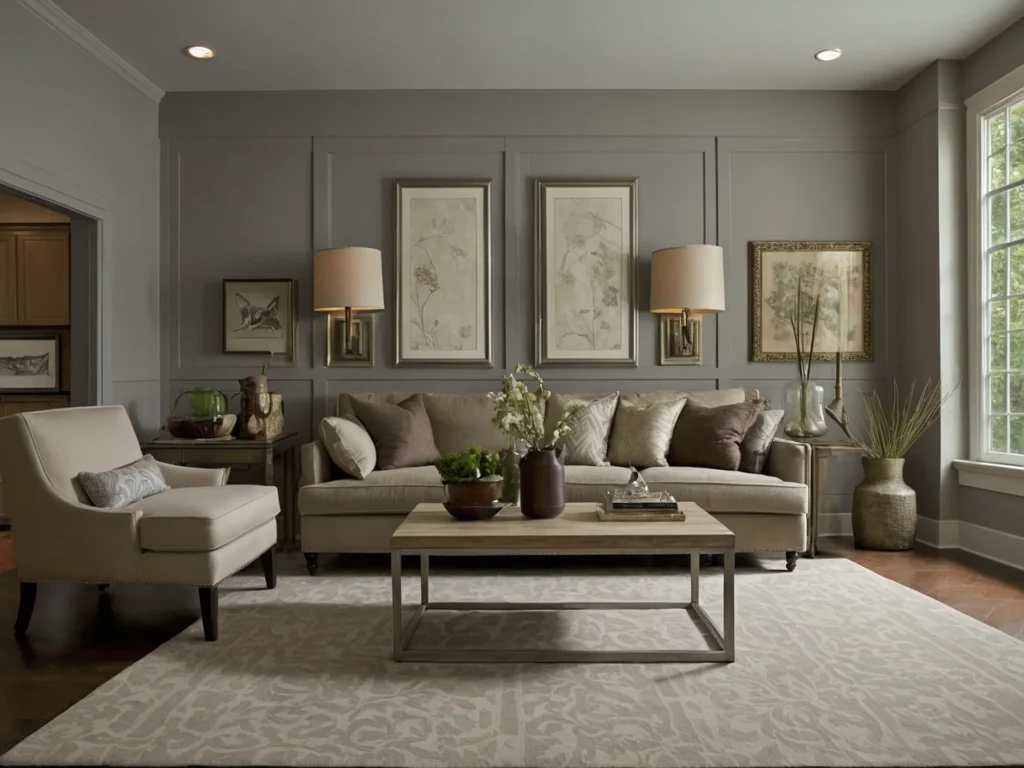
As a greige – a blend of gray and beige – Revere Pewter offers a warm, welcoming look. The light-medium neutral, 1476 in Benjamin Moore’s Historical Colors line, has an earthy, organic feel.
Revere Pewter’s versatility makes it a popular choice for nearly any room. Its slight beige undertone helps it coordinate with woods like oak, cherry and walnut. The greige color also pairs well with metals from brass to satin nickel.
While considered contemporary, Revere Pewter has a classic timelessness. This ensures it won’t soon look dated.
Detailed Comparison of Color Qualities
Now, let’s explore the defining qualities of Classic Gray vs. Revere Pewter in greater depth. This will provide a clearer picture of their unique personalities.
Color Undertones and Room Aesthetics
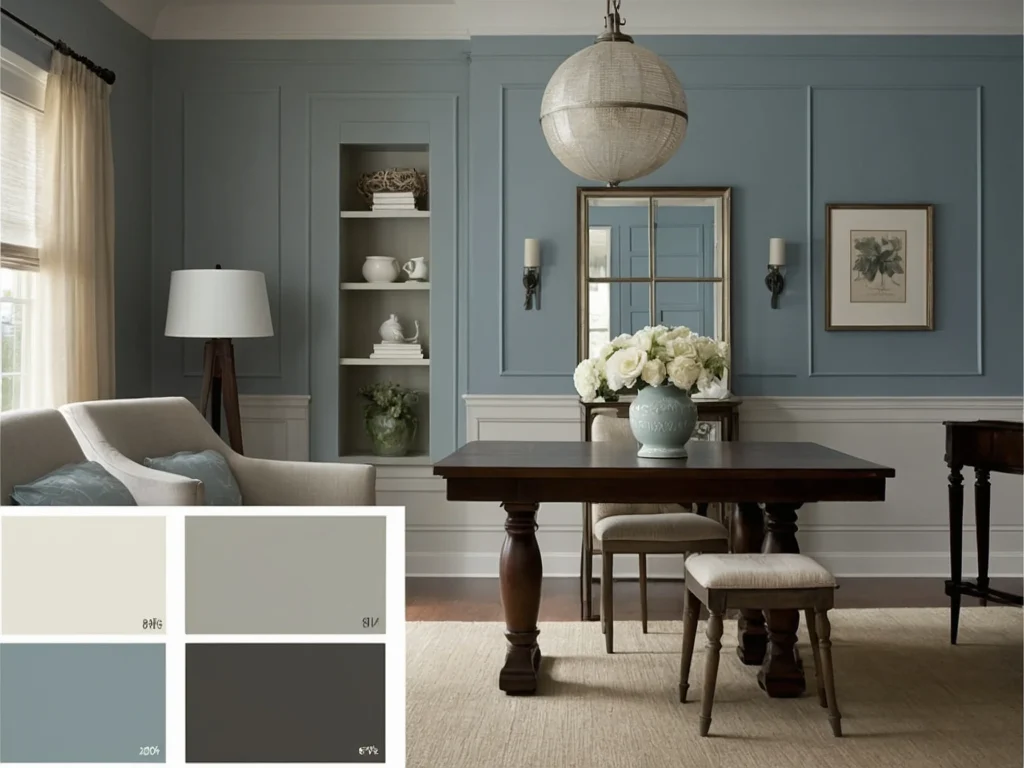
The primary difference between these Benjamin Moore grays comes down to undertones.
Classic Gray has a cool, blue-green undertone that creates an airy and tranquil mood. The hint of color makes it more dynamic than true greige shades.
In contrast, Revere Pewter has a warm, beige-like undertone with earthy tones. This gives it a more grounded feel compared to cooler grays.
Due to its crisp, pale blue undertone, Classic Gray excels in bedrooms, living rooms and offices. It provides a relaxing yet energizing backdrop for creative spaces.
Revere Pewter’s cozy, organic look makes it perfect for dens, dining rooms, and family spaces. Its versatility also works well in entryways, kitchens and bathrooms.
Lightness and Space Perception
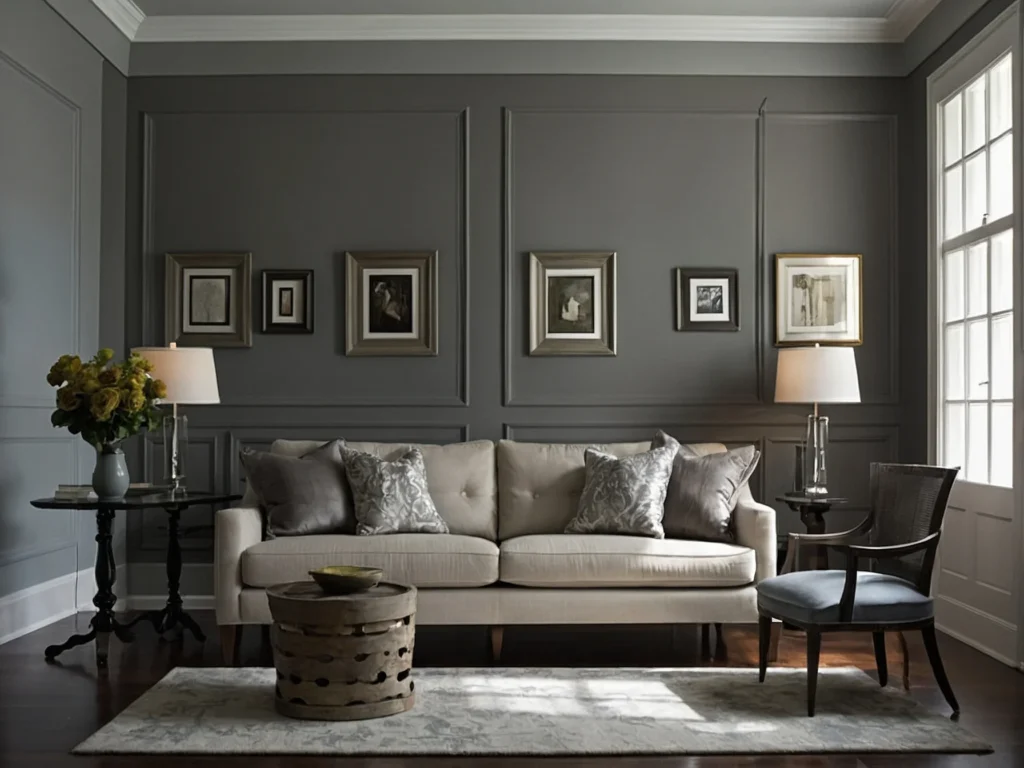
Beyond undertones, these shades differ significantly in depth and lightness:
- Classic Gray is a lighter gray, akin to a pale icy blue.
- Revere Pewter is a medium-light greige that avoids starkness.
Being lighter, Classic Gray has a greater space-enhancing effect than the more mid-tone Revere Pewter. It reflects light efficiently, making rooms feel more open and airy.
While not as brightening, Revere Pewter’s light-medium greige still appears airy compared to deeper beiges. It lands in the sweet spot between feeling too dark or stark white.
So in smaller rooms, Classic Gray can enhance the perception of space in a way darker colors can’t. But Revere Pewter also avoids closing in a room.
Compatibility with Furniture and Accessories

The undertones of these Benjamin Moore grays also impact how they coordinate with woods, metals and other materials.
Classic Gray‘s cooler tone complements warm woods like oak, walnut and mahogany. It also pairs elegantly with finishes like oil-rubbed bronze, aged brass and satin nickel.
Revere Pewter‘s beige-gray tone harmonizes beautifully with medium to lighter warm woods like maple, birch and ash. It also matches well with brushed brass and other warm metallics.
Both grays work with a variety of color schemes. But Revere Pewter’s slight warmth gives it an edge blending with woods prominent in traditional and transitional spaces.
Coordinating Rooms and Ceilings
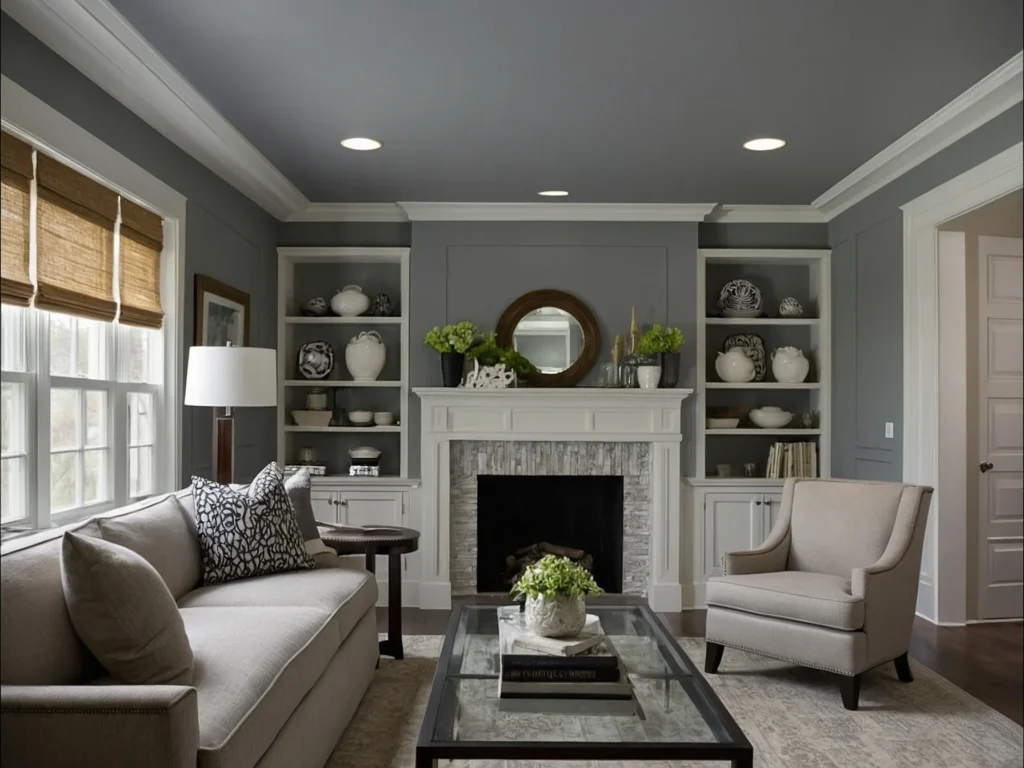
These versatile grays also lend themselves to whole-home coordination:
- Classic Gray as a main wall color can contrast with Revere Pewter on the ceiling .
- Revere Pewter makes a soothing ceiling shade to complement Classic Gray walls.
The visual separation between the cooler Classic Gray and organic Revere Pewter adds depth and interest across connected spaces.
And painting ceilings just one to two shades lighter than walls helps create a seamless, monochromatic look. This makes rooms feel larger than abrupt color changes.
Timelessness vs. Trendiness
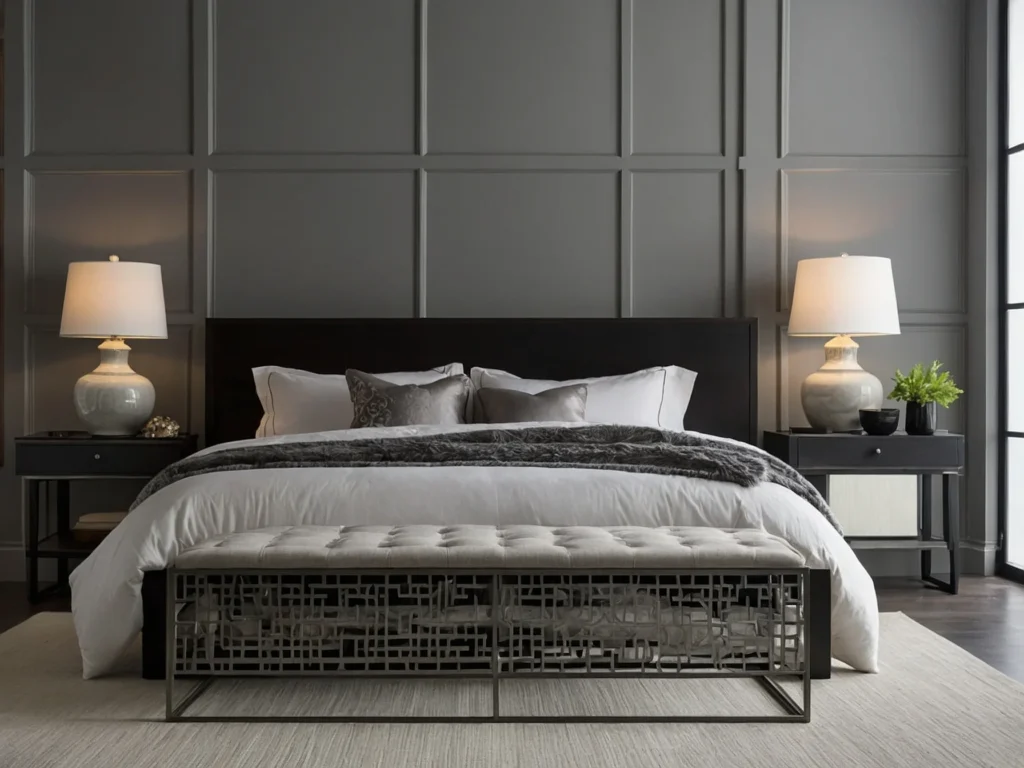
While both paint colors are popular now, their grayscale personalities have different longevity implications:
- Revere Pewter comes across as organic and timeless – a look that never goes out of style.
- Classic Gray reads as more crisp and modern – though not to the point of feeling trendy.
Revere Pewter’s timeless warmth lends itself to traditional design and rustic styles. Classic Gray makes a flexible neutral option within contemporary, modern and minimalist spaces.
So if you prefer a classic look, Revere Pewter is likely the safer, long-lasting choice. But Classic Gray offers cooler modernity without the risk of dating quickly.
Comparing with Other Benjamin Moore Grays
To better position Classic Gray and Revere Pewter, let’s compare them with two other popular Benjamin Moore gray paint colors.
Agreeable Gray – A Warmer Classic Gray

A top Benjamin Moore color, Agreeable Gray is a warmer, softer version of Classic Gray with hints of lilac-beige. It nearly matches Classic Gray in depth as a light-medium neutral.
So if you like the crispness of Classic Gray but want slightly more warmth, the similar but warmer Agreeable Gray could work perfectly.
Edgecomb Gray – Cooler than Revere Pewter

For those who prefer Revere Pewter but want a cooler, crisper gray, Edgecomb Gray makes a fitting Benjamin Moore alternative.
Edgecomb Gray has a blue-green undertone like Classic Gray. But it’s darker and more saturated as a medium-dark gray. So it offers extra boldness alongside its cooler personality.
Color Pairing and Complementary Colors

Both grays lend themselves to various color pairings:
- Classic Gray works well with warm neutrals like Sherwin-Williams Urbane Bronze, Behr Silver Drop, or Benjamin Moore Stonington Gray.
- Revere Pewter complements deeper color accents like Benjamin Moore Kendall Charcoal, Sherwin-Williams Renwick Olive, or Behr Roasted Chestnut.
Crisp white trim and molding also enhance both grays without dominating. Off-whites like Benjamin Moore Chantilly Lace avoid clashing with the organic tones.
And accent walls in colors like naval blue, sage green or light terra cotta can really make Classic Gray and Revere Pewter pop.
Lighting Effects on Paint Color Perception

The interplay between these shades and lighting also deserves consideration:
- In natural light, especially midday sun, Revere Pewter reads more beige, losing some coolness.
- With artificial lighting at night, Revere Pewter appears truer to its warmer gray tone.
- Classic Gray maintains its crisper gray-blue personality in all lighting. Though it can take on a slight green cast in natural light.
So Revere Pewter has more light-dependent variation in color temperature. Classic Gray is a truer consistent gray across lighting conditions. Keep this in mind when previewing paint swatches in store lighting.
Additional Considerations When Choosing Between Classic Gray and Revere Pewter
Here are some final tips and common questions to help guide your Revere Pewter vs. Classic Gray decision:
Does Classic Gray Go With Revere Pewter?
Due to their opposing temperature, Classic Gray and Revere Pewter complement each other nicely in the same space when used purposefully.
Some effective ways to combine them include:
- Classic Gray walls with Revere Pewter ceilings
- Revere Pewter walls with Classic Gray accent walls
- Classic Gray main spaces with Revere Pewter bedrooms
The key is applying each color to separate elements, like walls, trim, ceilings and accent walls. This allows you to enjoy the benefits of both cool gray and warm greige tones.
Comparable Colors to Revere Pewter
Some comparable greige paint colors include:
- Agreeable Gray by Benjamin Moore
- Accessible Beige by Sherwin-Williams
- Edgecomb Gray by Benjamin Moore
- Repose Gray by Sherwin-Williams
- Gray Owl by Benjamin Moore
While none are exact matches, these colors echo Revere Pewter’s lightness and subtle warmth that make it so livable.
Is Revere Pewter Too Gray or Classic Gray Too Light?
Revere Pewter avoids going too dark or sad due to its medium-light shade. The greige warmth also offsets any possible starkness.
Classic Gray’s pale gray hue keeps it airy and bright instead of feeling washed out. The cool undertone adds just enough personality without dominating.
Both hit the sweet spot between feeling too extreme in depth or undertone. But lighting does affect their appearance, so preview paint swatches at various times of day.
Conclusion
When deciding between timeless Revere Pewter and airy Classic Gray, consider your space, color preference and style goals.
Do you want a warmer, organic backdrop or a cooler, tranquil gray? Is a versatile neutral or modern crispness more your style?
Factor in how each color works in your lighting and with your furnishings. This will ensure you select the best Benjamin Moore gray for your home.
Whichever you choose, you can feel confident in picking a top-selling Benjamin Moore color known for beauty, versatility and livability. Carefully previewing paint swatches in your home is key to making the perfect gray decision.
With this comprehensive Classic Gray versus Revere Pewter comparison, you now have all the details on these gorgeous grays. All that’s left is painting your perfect shade!

